Effect of Palladium Electrode Patterns on Hydrogen Response Characteristics from a Sensor Based on Ta2O5 Film on SiC at High Temperatures
Abstract
1. Introduction
2. Experiments
3. Results and Discussion
3.1. Evaluation of Ta2O5 Properties in the MIS Structure
3.2. Response Characteristics for Hydrogen
4. Conclusions
Author Contributions
Funding
Conflicts of Interest
References
- Eranna, G.; Joshi, B.C.; Runthala, D.P.; Gupta, R.P. Oxide materials for development of integrated gas sensors—A comprehensive review. Crit. Rev. Solid State Mater. Sci. 2004, 29, 111–188. [Google Scholar] [CrossRef]
- Kita, J.; Schubert, F.; Rettig, F.; Engelbrecht, A.; Grob, A.; Moos, R. Ceramic alumina substrates for high-temperature gas sensors-implications for applicability. Procedia Eng. 2014, 87, 1505–1508. [Google Scholar] [CrossRef]
- Zhang, M.; Ning, T.; Sun, P.; Yan, Y.; Zhang, D.; Li, Z. Effect of Al2O3-SiO2 substrate on gas-sensing properties of TiO2 based lambda sensor at high temperature. Ceram. Int. 2018, 44, 3000–3004. [Google Scholar] [CrossRef]
- Liu, X.; Peng, B.; Zhang, W.; Zhu, J.; Liu, X.; Wei, M. Improvement of high-temperature stability of Al2O3/Pt/ZnO/Al2O3 film electrode for SAW devices by using Al2O3 barrier layer. Materials 2017, 10, 1377. [Google Scholar] [CrossRef]
- Trinchi, A.; Kandasamy, S.; Wlodarski, W. High temperature field effect hydrogen and hydrocarbon gas sensors based on SiC MOS devices. Sens. Actuator B Chem. 2008, 133, 705–716. [Google Scholar] [CrossRef]
- Yu, J.; Chen, G.; Li, C.X.; Shafiei, M.; Ou, J.Z.; du Plessis, J.; Kalantar-zadeh, K.; Lai, P.T.; Wlodarski, W. Hydrogen gas sensing properties of Pt/Ta2O5 Schottky diodes based on Si and SiC substrates. Sens. Actuator B Chem. 2011, 172, 9–14. [Google Scholar] [CrossRef]
- Spetz, A.L.; Baranzahi, A.; Tobias, P.; Lundstrom, I. High temperature sensors based on metal-insulator-silicon carbide devices. Phys. Status Solid A Appl. Res. 1997, 162, 493–551. [Google Scholar] [CrossRef]
- Wright, N.G.; Horsfall, A.B. SiC sensors: A review. J. Phys. D Appl. Phys. 2007, 40, 6345–6354. [Google Scholar] [CrossRef]
- Ghosh, R.N.; Tobias, P. SiC field-effect devices operating at high temperature. J. Electron. Mater. 2005, 34, 345–350. [Google Scholar] [CrossRef]
- Lu, C.; Chen, Z. High-temperature resistive hydrogen sensor based on thin nanoporous rutile TiO2 film on anodic aluminum oxide. Sens. Actuator B Chem. 2009, 140, 109–115. [Google Scholar] [CrossRef]
- Hunter, G.W.; Gary, W. A survey and analysis of commercially available hydrogen sensors. NASA Tech. Memo. 1992, 105878. [Google Scholar]
- Kim, S. Capacitance response characteristics of hydrogen sensor with tantalum oxide dielectric layer. Int. J Hydrogen Energy 2018, 43, 19810–19815. [Google Scholar] [CrossRef]
- Soo, M.T.; Cheong, K.Y.; Noor, A. Advances of SiC-based MOS capacitor hydrogen sensors for harsh environment applications. Sens. Actuators B Chem. 2010, 151, 39–55. [Google Scholar] [CrossRef]
- Gu, H.; Wang, Z.; Hu, Y. Hydrogen gas sensors based on semiconductor oxide nanostructures. Sensors 2012, 12, 5517–5550. [Google Scholar] [CrossRef]
- Xue, N.; Zhang, Q.; Zhang, S.; Zong, P.; Yang, F. Highly sensitive and selective hydrogen gas sensor using the mesoporous SnO2 modified layers. Sensors 2017, 17, 2351. [Google Scholar] [CrossRef]
- Joo, S.; Choi, J.; Kim, S.; Kim, S. Pd/Ta2O5/SiC Schottky-diode hydrogen sensors formed by using rapid thermal oxidation of a Ta thin films. J. Korean Phys. Soc. 2013, 63, 1794–1798. [Google Scholar] [CrossRef]
- Chaneliere, C.; Autran, J.L.; Devine, R.A.B.; Balland, B. Tantalum pentoxide thin films for advanced dielectric applications. Mater. Sci. Eng. B Rep. 1998, 22, 269–322. [Google Scholar] [CrossRef]
- Chandrasekharan, R.; Park, I.; Masel, R.; Shannon, M. Thermal oxidation of tantalum films at various oxidation states from 300 to 700 °C. J. Appl. Phys. 2005, 98, 114908. [Google Scholar] [CrossRef]
- Ezhilvalavan, S.; Tseng, T. Preparation and properties of tantalum pentoxide (Ta2O5) thin films for ultra large scale integrated circuits (ULSIs) application—A review. J. Mater. Sci. Mater. Elec. 1999, 10, 9–31. [Google Scholar] [CrossRef]
- Fisser, M.; Badcock, R.; Teal, T.; Hunze, A. Optimizing the sensitivity of palladium based hydrogen sensors. Sens. Actuators B Chem. 2018, 259, 10–18. [Google Scholar] [CrossRef]
- Gabrielli, C.; Grand, P.; Lasia, A.; Perrot, H. Investigation of hydrogen adsorption and absorption in palladium thin films i. theory. J. Electrochem. Soc. 2004, 151, A1925–A1936. [Google Scholar] [CrossRef]
- Gabrielli, C.; Grand, P.; Lasia, A.; Perrot, H. Investigation of hydrogen adsorption and absorption in palladium thin films iii. impedance spectroscopy. J. Electrochem. Soc. 2004, 151, A1943–A1949. [Google Scholar] [CrossRef]
- Jurczakowski, R.; Losiewicz, B.; Lasia, A. Kinetic and thermodynamic parameters of hydrogen sorption in Pd, Pd-Pt and on Pt. ECS Trans. 2007, 2, 11–19. [Google Scholar]
- Chang, S.; Kim, Y.; Lee, J.; Choi, K. Thermal stability study of Ni–Si silicide films on Ni/4H-SiC contact by in-situ temperature-dependent sheet resistance measurement. Jpn. J. Appl. Phys. 2019, 58, 075503. [Google Scholar] [CrossRef]
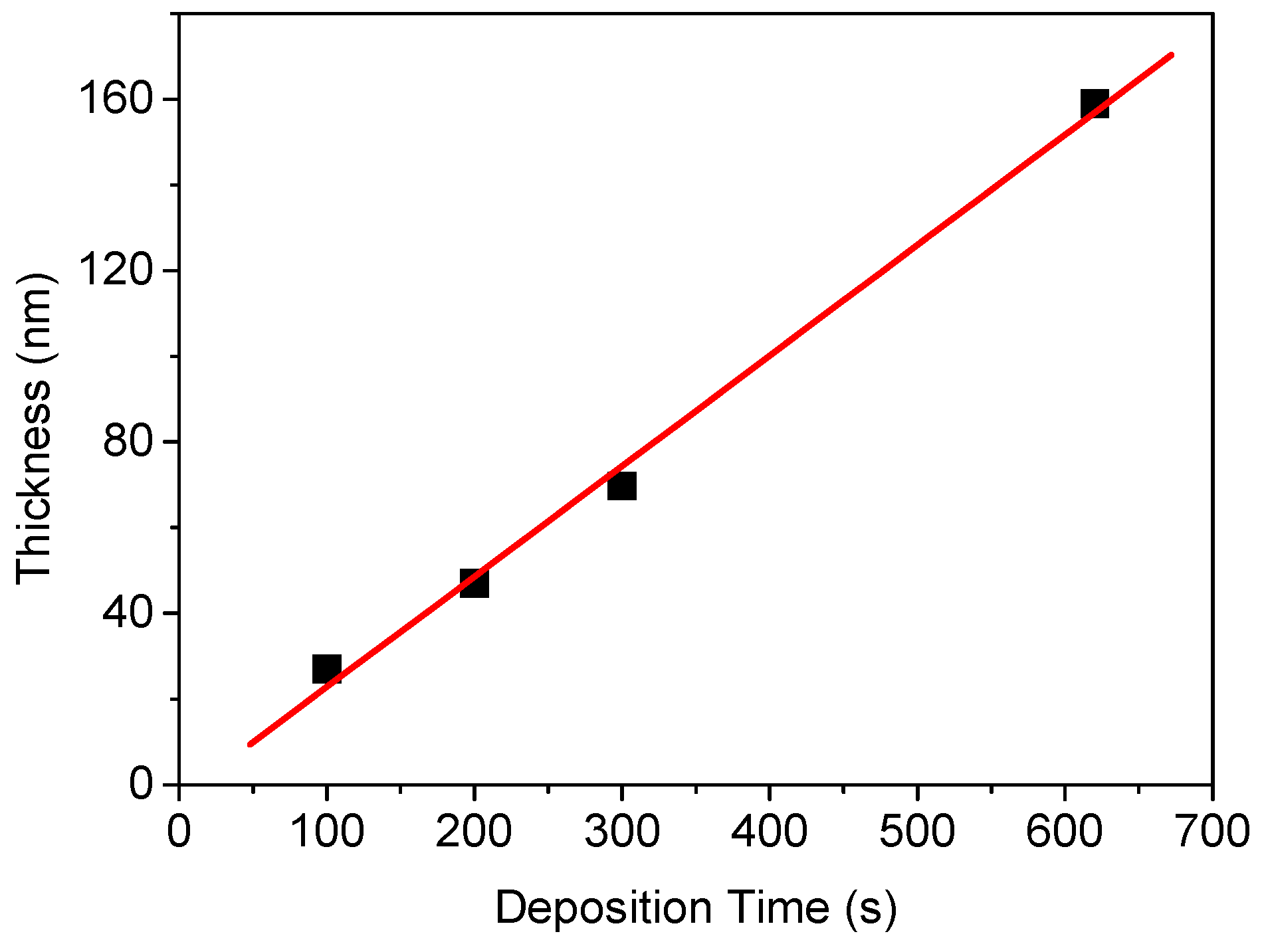
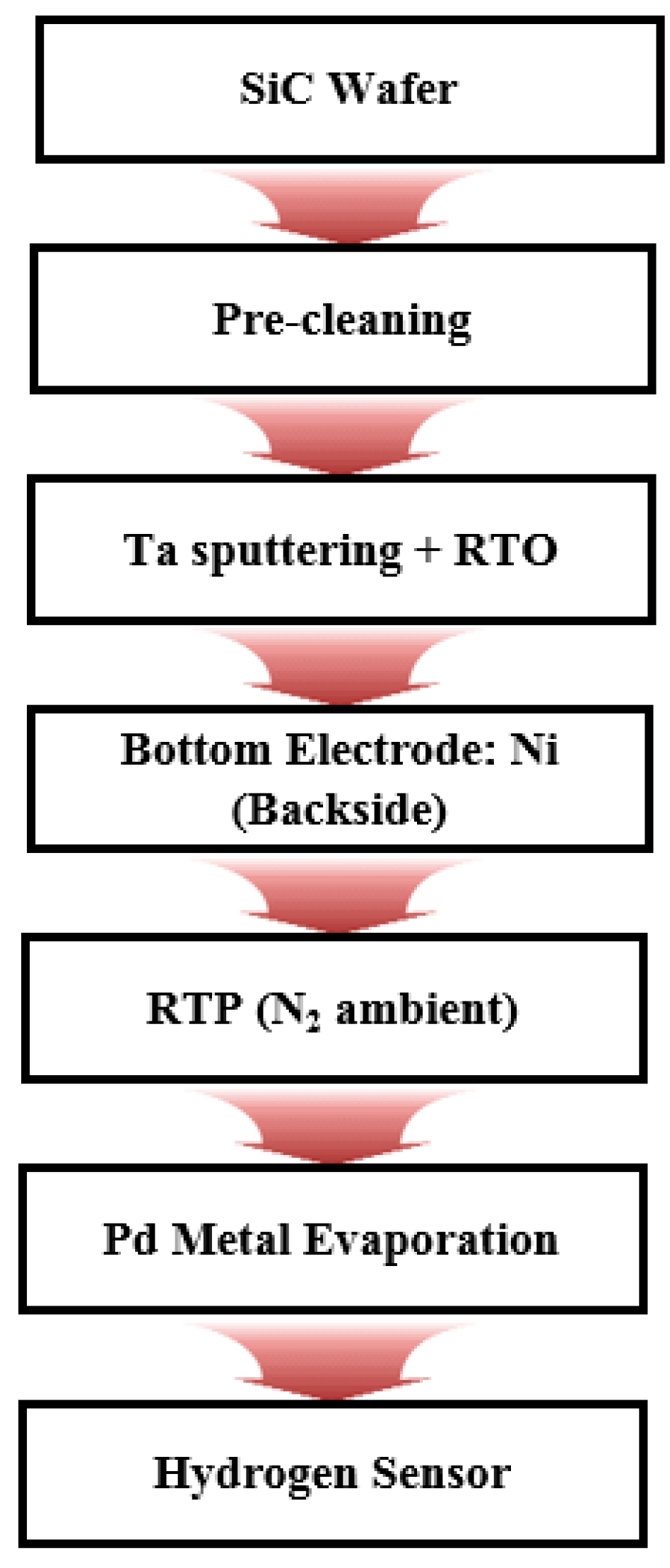
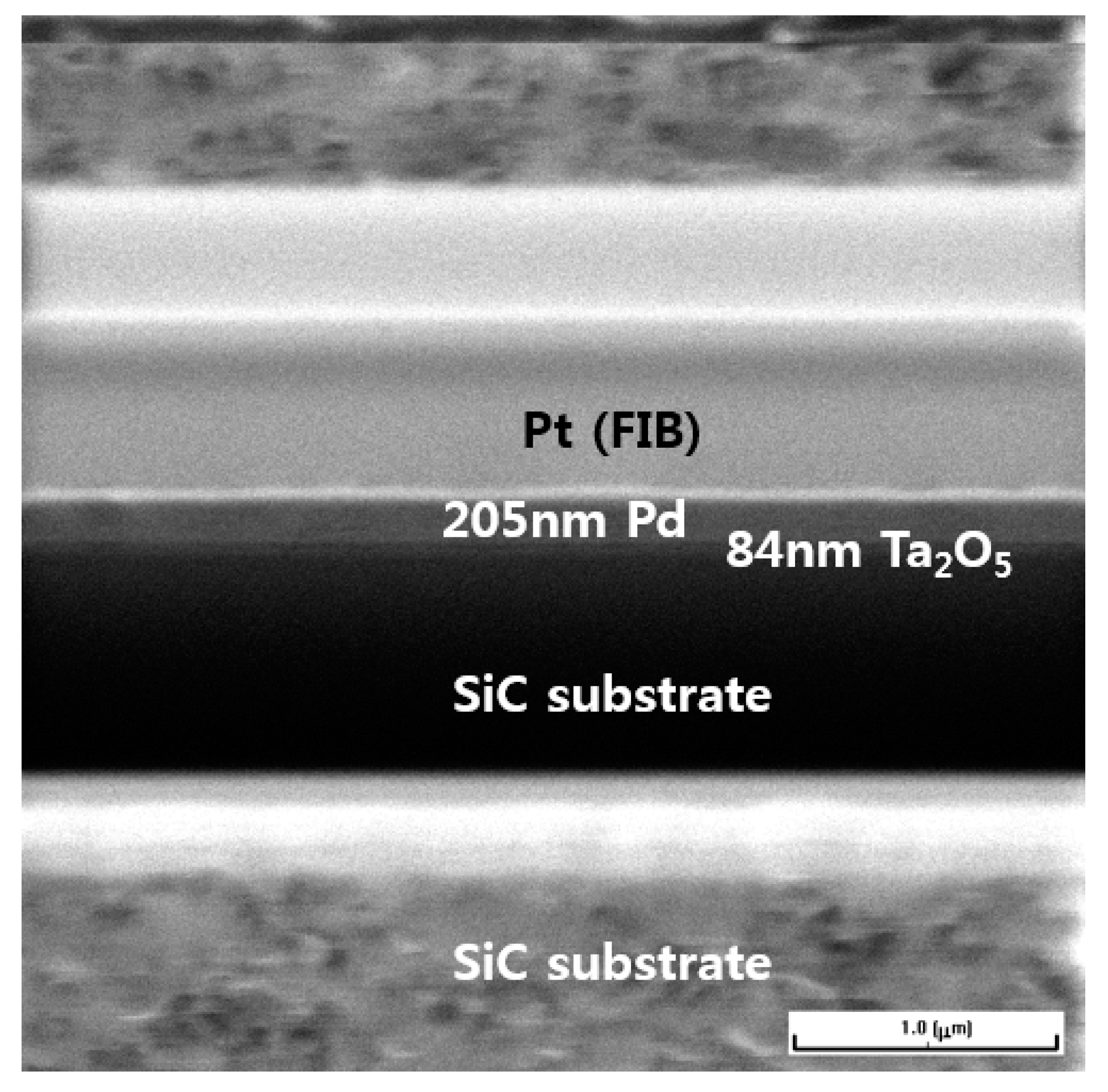

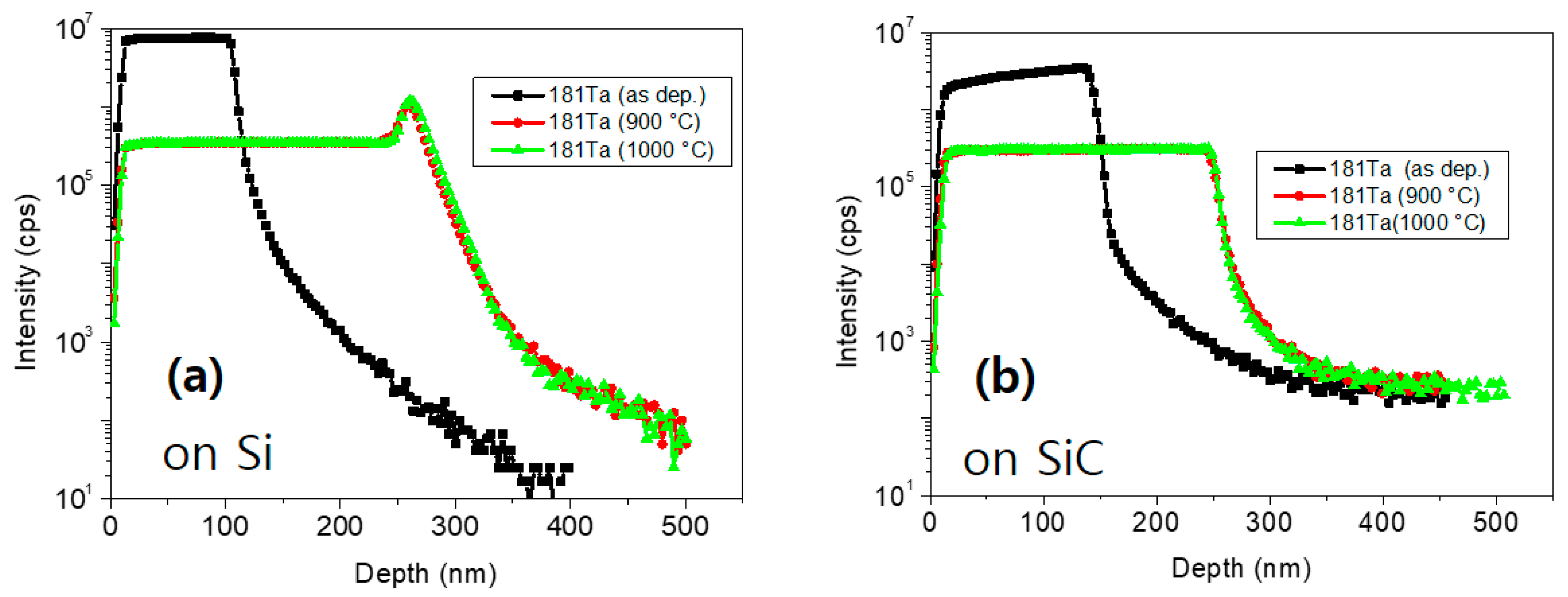
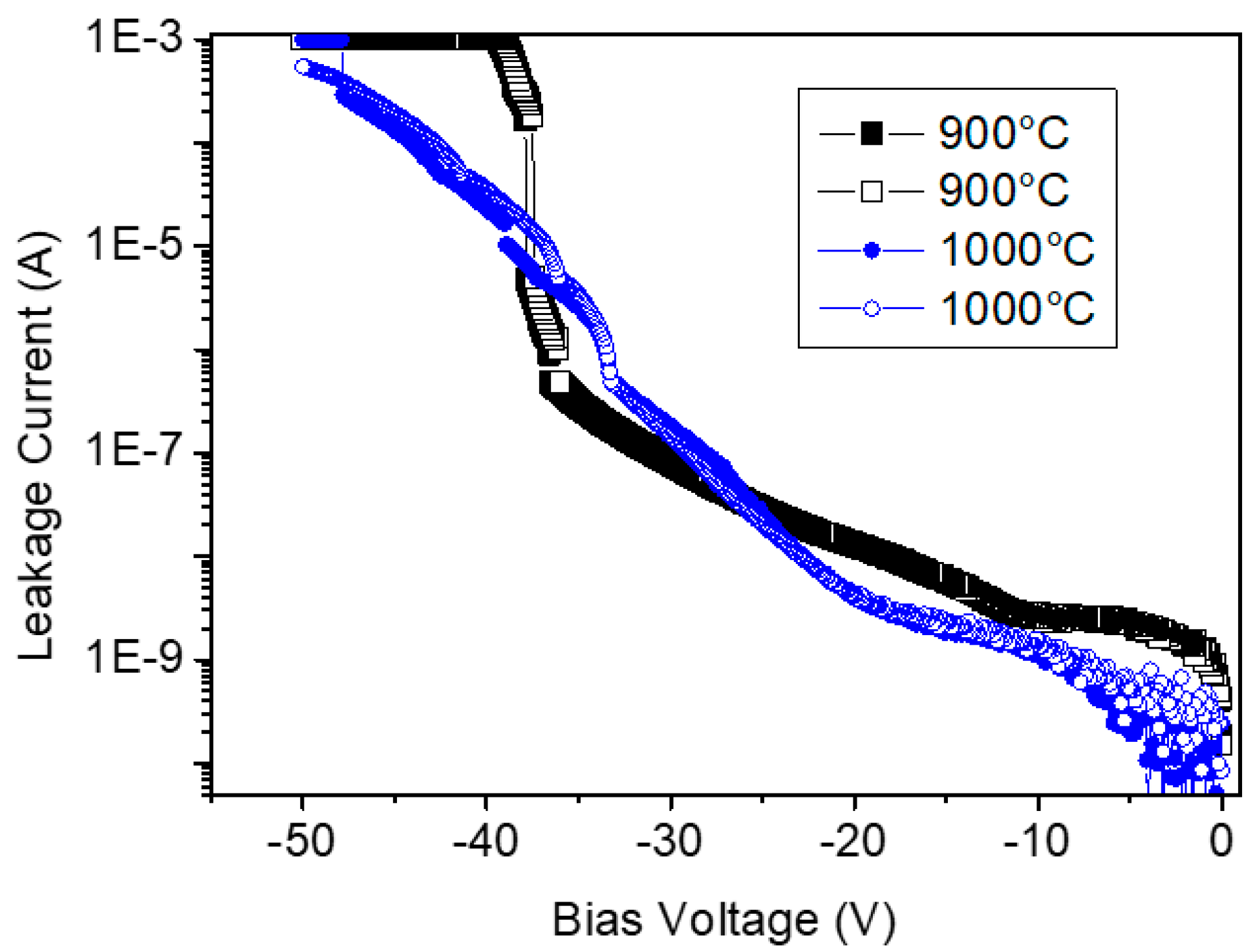

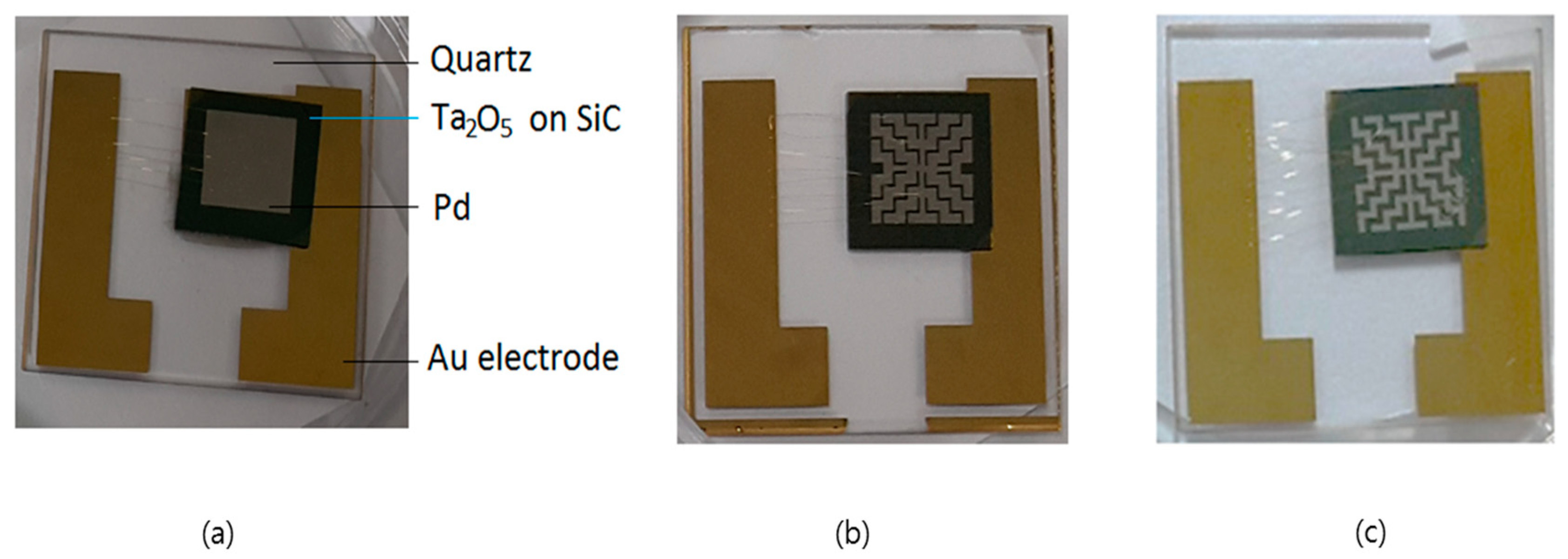

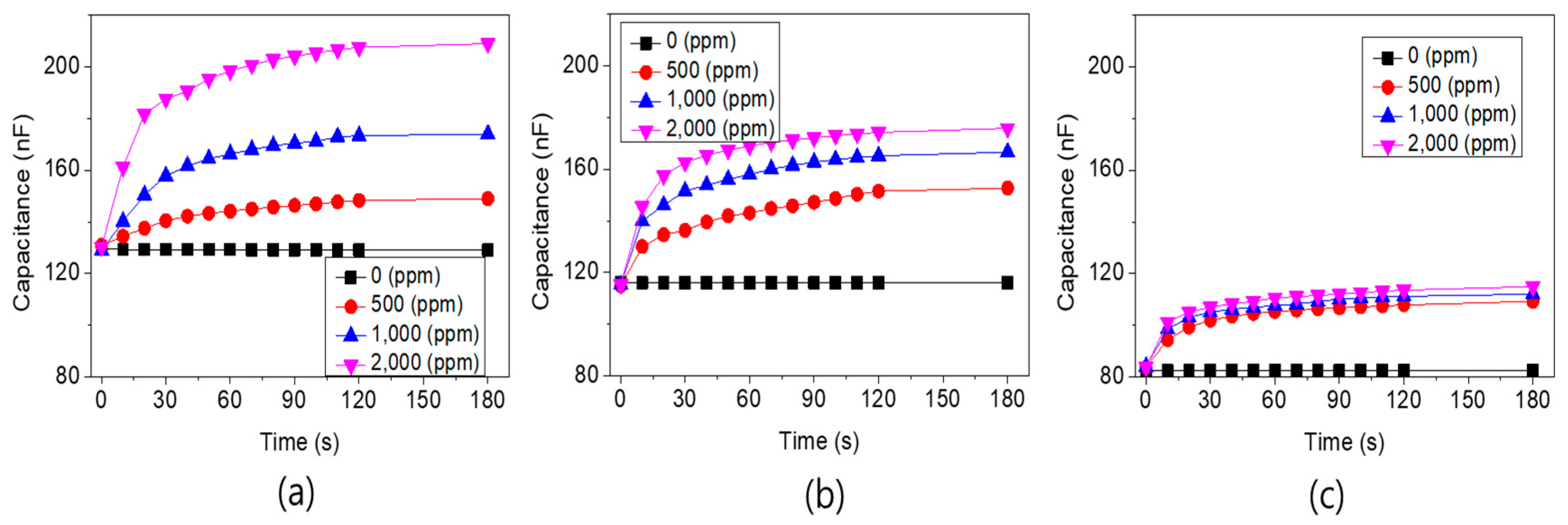
© 2019 by the authors. Licensee MDPI, Basel, Switzerland. This article is an open access article distributed under the terms and conditions of the Creative Commons Attribution (CC BY) license (http://creativecommons.org/licenses/by/4.0/).
Share and Cite
Choi, K.-K.; Kim, S. Effect of Palladium Electrode Patterns on Hydrogen Response Characteristics from a Sensor Based on Ta2O5 Film on SiC at High Temperatures. Sensors 2019, 19, 5478. https://doi.org/10.3390/s19245478
Choi K-K, Kim S. Effect of Palladium Electrode Patterns on Hydrogen Response Characteristics from a Sensor Based on Ta2O5 Film on SiC at High Temperatures. Sensors. 2019; 19(24):5478. https://doi.org/10.3390/s19245478
Chicago/Turabian StyleChoi, Kyeong-Keun, and Seongjeen Kim. 2019. "Effect of Palladium Electrode Patterns on Hydrogen Response Characteristics from a Sensor Based on Ta2O5 Film on SiC at High Temperatures" Sensors 19, no. 24: 5478. https://doi.org/10.3390/s19245478
APA StyleChoi, K.-K., & Kim, S. (2019). Effect of Palladium Electrode Patterns on Hydrogen Response Characteristics from a Sensor Based on Ta2O5 Film on SiC at High Temperatures. Sensors, 19(24), 5478. https://doi.org/10.3390/s19245478




